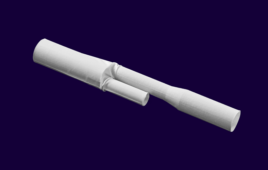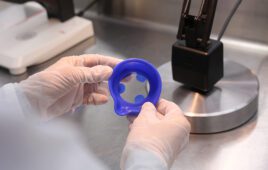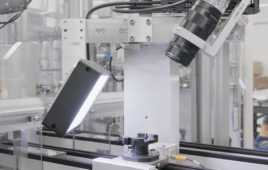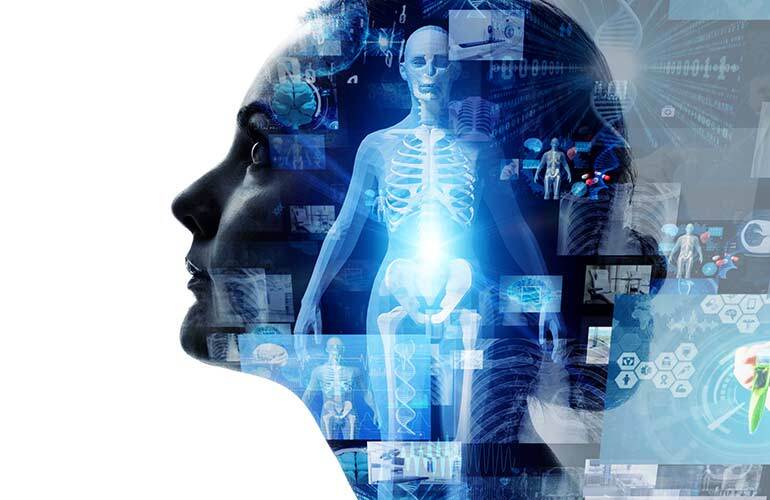
Modular mobile carts & pre-trained learning models save months in bringing products to market
By Roger Lam, MBX Systems
The rise of artificial intelligence and edge computing has paved the way for computer vision applications such as fall detection, virtual patient interactions and remote surgery viewing designed for deployment near hospital beds, in operating rooms and in other edge environments. Until recently, however, most initiatives in this area have been stymied by lengthy and expensive development cycles.
Independent software vendors (ISVs) aiming to develop these kinds of smart hospital solutions had to spend up to two years and $100,000+ for custom medical cart design, engineering and mold injection, and nearly that long to build machine learning models from scratch. By the time the finished solution was ready for market, technology advances such as CPU and GPU performance gains likely made it obsolete, leaving vendors with unsellable products.
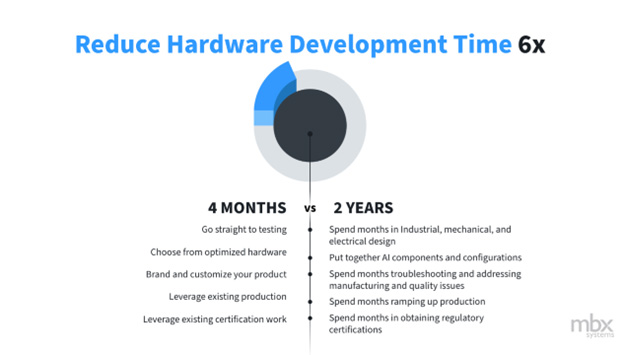
Today, by contrast, medtech developers can bring targeted computer vision solutions to market in just a few months by using innovative hardware and software building blocks that eliminate all but the last mile of development work. Like model home designs that can be customized to the buyer’s specifications, these solutions can be quickly integrated to fit a specific use case without wasting time on preliminary development activities. For example:
- On the hardware side, solutions like MBX Systems’ Kori modular medical cart shrink development time from two years to as little as four months by providing a pre-designed, pre-certified, off-the-shelf housing built to accommodate different workstations, cameras and peripherals such as keyboards, monitors and articulating arms. These features as well as optimization for common machine learning frameworks eliminate lengthy design, manufacturing and regulatory certification timelines.
- On the software side, pretrained learning models and optimized software development kits like those available with the NVIDIA Clara Guardian edge AI application framework for smart hospitals can greatly shorten development time for applications such as body pose estimation, mask detection and heart rate monitoring from 80 weeks to just eight. Clara Guardian’s full computing stack architecture, including graphics cards, development kits, acceleration libraries and application frameworks, further accelerates development.

Using these types of building blocks is up to 80% faster than designing, testing, certifying, manufacturing and deploying computer vision healthcare applications from scratch. This fast-track strategy can also save thousands or even millions of dollars in development costs, helping medtech solutions providers achieve a solid return on investment.

Faster, Smarter Development
One company that has leveraged the building block approach for computer vision development is NESA Solutions, a developer of next-generation AI-powered software solutions.
Built using the NVIDIA Clara Guardian platform and MBX’s Kori modular medical cart, NESA’s mobile OptiKal AI telehealth and remote patient monitoring platform can detect movements, poses and behaviors indicating that a hospitalized patient is at risk of falling and immediately notify nursing staff. This enables clinicians to monitor multiple patients in multiple rooms in real time, create predictive workflows based on patient behavior patterns, and intervene before a fall occurs.
After being introduced to Kori at HIMSS in August 2021, it took only seven months for NESA’s platform to be production-ready. NVIDIA Clara Guardian’s pretrained learning models for body pose estimation saved NESA months of data science work, while the Kori hardware eliminated the need to design and manufacture a purpose-built medical cart from the ground up.
Kori also accelerated development because it is IEC pre-certified and designed specifically for computer vision applications in hospital settings; pre-validated for NVIDIA Clara Guardian workflows for integration into AI devices, powered by the NVIDIA Riva speech AI SDK for automatic speech recognition and text-to-speech, and NVIDIA DeepStream for visual analytics; and pre-configured to work with multiple dome cameras and embedded servers.
The final NESA OptiKal platform is an AI-powered remote sitter solution that integrates:
- NESA’s AI-based analytics combined with precision location and dynamic business rule capabilities that have the power to detect behavioral patterns and enable real-time responses, integrated within Epic’s EHR for centralized patient monitoring and fall risk detection
- The MBX Varion G1-PSF-JAGX workstation, a high-performance AI system that is pre-certified for medical and global use, performs on-device inferencing utilizing the embedded NVIDIA Jetson Xavier NX module, T4 (A200) GPU server known for bringing supercomputing to the edge, and tucks into a cavity in the Kori base via a VESA mount
- Hanwha’s XNP-6120H Mini PTZ cameras, which are pre-configured to work the Kori system, deployed in the head of the cart, and able to monitor up to 12 patients per room per screen
- Commend’s two-way, real-time ET 962H intercom system – also integrated into the Kori cart – delivering audio notifications to clinicians when a fall is imminent
The NESA solution’s ability to deploy a camera and intercom to rooms enables hospitals to remotely monitor multiple patients with one nurse or caregiver, helping overcome the shortage of healthcare workers while simultaneously improving patient safety. With the average hospital experiencing up to 40 patient falls per month at a cost per fall of $15,000 to $22,000, the platform also has the potential to greatly reduce those costs and associated lawsuits.
Finally, since NESA’s OptiKal solution can perform AI inferencing on the edge, it runs on an internal intranet with no need for Internet connectivity. This enables hospitals to implement remote patient monitoring without violating patient privacy and confidentiality requirements or paying tens of thousands of dollars for the bandwidth needed to send data to the cloud.
Multiple Smart Hospital Applications
Remote patient monitoring is only one type of computer vision application that can benefit from the ability to use pre-designed hardware and pre-defined software building blocks to shorten development time. These newer technology offerings can dramatically speed time to market for telehealth applications enabling remote consultations in hospital rooms, telesurgery platforms that connect patients and surgeons from different geographic regions, and other solutions that can help improve operational efficiencies as well as patient outcomes.
For more information, visit Fast-Tracking the Development of AI Workflows in Hospitals and Accelerating the Development of a Remote Intelligent Patient Monitoring Solution, or contact us at mbx.com.
Roger Lam is VP of Engineering at MBX Systems, a provider of custom computing hardware engineering, manufacturing and logistics services for ISVs, OEMs and other technology companies that deliver complex products on turnkey hardware.
Sponsored Content by MBX Systems

